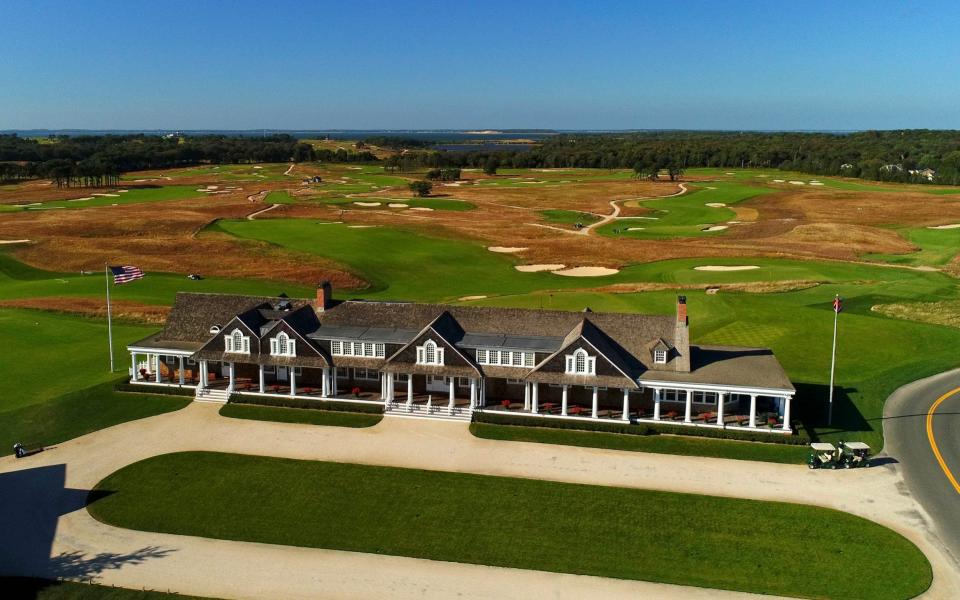Blind greens, brutal rough and sadistic bunkers: My hardest 10 Major courses

South Carolina coastal layout Kiawah Island plays host to this week's USPGA Championship and could play as the longest course in major championship history.
It promises to be a stiff test if the breeze picks up off the Atlantic ocean but how does it compare with the rest of the world's toughest courses?
James Corrigan picks the 10 tracks which give the world's best sleepless nights.
10. Augusta National (Georgia. Masters: 1934-present)
Next to Muirfield and perhaps Turnberry, the home of The Masters is the best course on the majors rota. When it was soft last November, Dustin Johnson made it look far too compliant with his record 20-under winning total. The faster conditions last month kept Hideki Matsuyama to 10-under. Demanding, unique and stunningly beautiful.
9. Royal Birkdale (Eng. Open: 1954, ’61, ’65, ’71, ’76, ’83, ’91, ’98. 2008, ’17)
The best course in England is also the toughest if Mother Nature is in a links type of mood. Rolling through the dunes, the layout offers the complete challenge and the fact its Open winners include Palmer, Watson, Trevino, Harrington and Spieth - from a TV transport compound in 2017 - is no coincidence. If a links can be described as fair then this is it. Until the wind gets up and the rain plays tag-team like it did in 2008. Then it is cruel.
8. Olympic Club (San Fran. US Open: 1955, ’66, ’87, 98, 2012)
The Lake Course in San Francisco staged the 1955 US Open, which many believe presented the toughest post-war major challenge. Little-known Jack Fleck famously shocked Ben Hogan that week, prevailing in a 36-hole play-off after both finished the regulation 72 holes in seven-over. The rough can be brutal, which is a problem as the fairways are tight. The slick, undulating greens only add to the torture.
7. Shinnecock Hills (NY. US Open: 1896, 1986, ’95, 2004, ’18)
This brilliant Long Island layout really does need tricking up as the USGA stupidly did on the weekend of the 2004 US Open. Annoyed with the comparatively low scores of the first rounds, the officials neglected to water the greens and lost them, the par three seventh proving particularly farcical. If it is windy, then be prepared to be attacked from all directions.

6. Whistling Straits (Wisconsin. USPGA: 2004, ’10, ’15)
And another demanding Dye design. Similar to Kiawah Island in that it’s a man-made links copy, the 7,790-yarder on the shores of Lake Michigan is incredibly rugged, boasting more than 1,000 bunkers. Dustin Johnson famously came a cropper in one of these at the 2010 USPGA, believing it to be wasteland and being with two shots. Stages this year’s Ryder Cup.
5. Bethpage Black (NY. US Open: 2002, ’09. USPGA: 2019)
This public course comes with a sign warning that ordinary members of the public would be wise not to play it. Revamped by Rees Jones in 2002, many believe this Long Island eye-strainer is the toughest course in America for handicappers, with huge bunkers and small greens, several of them blind from the centre of the fairways. Tiger Woods was the only player under when he won the US Open in 2002.

4. Winged Foot (NY. US Open: 1929, ’59, ’74, ’84, 2006, ’20. USPGA: 1997)
When asked what the difficulty rating out of 10 he would give the New York State layout, Jack Nicklaus famously replied “11, or maybe 12”. At the 2006 US Open, Australian Geoff Ogilvy capitalised on the final-hole calamities of Colin Montgomerie and Phil Mickelson to the US Open on five-over to win, but did not break 70 all week. A nightmare to get up and down from around the greens.
3. Oakmont (Pitts. US Open: 1927, ’35, ’53, ’62, ’73, ’83, 94, 2007, ’16. USPGA: 1921, ’51, ’78)
The jewel of Pennsylvania is a fantastic challenge which borders on the unfair if its incredibly undulating greens are too fast. It is the only course where the USGA ask the club to slow down the greens for the pros. Angel Cabrera was five-over when he beat Tiger Woods in the 2007 US Open. Deep bunkers are sadistically placed.

2. Carnoustie (Scot. Open: 1931, ’37, ’53, ’68, ’75, ’99, 2007, ‘18)
The beast on the Open rota. The Angus links, armed with the malevolent Barry Burn which achieved immortality with its ensnaring of Jean Van de Velde in 1999, is at the mercy of the North Sea elements which sweep across a barren landscape. At that Open, the rough was grown to absurd levels - it does not need any toughening up.
1. Kiawah Island (S Carolina. USPGA: 2012, ’21)
Host course of the infamous 1991 “War On The Shore” Ryder Cup, this Pete Dye creation in South Carolina boasts some stunning holes, especially the par-three 17th which, if it blows, has justifiable claims to be the most demanding par three in the world. For the 2021 USPGA it is 7,876 yards and if the wind is up it will be a terrifying test.

